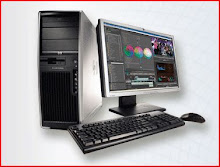
Philip Glass, Ravi Shankar
Passages
Original Release Date: 1990
Label: RCA Victor
320 mp3 cbr
1. Offering
2. Sadhanipa
3. Channels And Winds
4. Ragas In Minor Scale
5. Meetings Along The Edge
6. Prashanti
http://rapidshare.com/files/26408271/RSPGPassages.part1.rar
http://rapidshare.com/files/26410370/RSPGPassages.part2.rar 
Ravi Shankar & Jehudi Menuhin
West Meets East
1967 Label: Angel Records
~225 mp3 vbr v0
1. West Meets East: Prabhali
2. West Meets East: Swara Kakali
3. West Meets East: Raga Piloo
4. West Meets East: Dhun
5. West Meets East: Raga Ananda Bhairava
6. West Meets East: Tenderness
7. West Meets East: Twilight Mood
http://rapidshare.com/files/26401294/RSJMwestmeetseast.part1.rar
http://rapidshare.com/files/26402183/RSJMwestmeetseast.part2.rar 
MP3 | CBR 320 kbps l 140 Mb
Release Date: May 24, 1996
Label: Deutsche Grammophon
Genre: World
Styles: Raga, Indian Classical, World Fusion
The main link one finds between the music of different countries of the East, which includes the Middle East and Southeast Asia, as well as some Southern and Eastern European music, is that they are all based on modal structures. Indian music had a similar origin in various modes, but since about 2000 years ago there has emerged and developed a highly sophisticated system of melody-forms known as ragas, which are the foundation upon which a musician improvises. These ragas, which number into the thousands, should not be mistaken for a scale, key. melody or composition. Though each raga is based on one of the 72 full-octave parent scales, it must have its own ascending (aarohan) and descending (avarohan) structure, its own usage of a pattern of notes, its recognizable feauture: the most important note, and finally, the use of microtones-there are 22 intervals (shrutis) within an octave, including the usual 12 semitones. In addition, andola (swing or sway) and gamaka (types of special glissandi) and other embellishments bring prana and make the raga alive. These final accoplishments are secrets which disciple acquires from his guru through oral tradition after many years of training and hard work. Improvisation plays a leading role in Indian classical music. Taking a raga as the melodic base one can improvise in any manner and for any length of time one wishes - either in slow, medium or fast tempo,with or without drum accompaniment. Next to raga. tala is the most important element in Indian music. Talas are rhythmic cycles. The drum accompanies the singer when he stars a "song composition" or the instrumentalist staring a gal composition on which they can improvise. These compositions can be in any cycle or tala and in any tempo.
"PADHASAPA" (koto solo) is based on the evening Raga Durag. It is a pentatonic raga and does not use the 3rd and 7th notes (making the notes D the tonic - the scale of this raga is D-E-G-A-B-D). The piece has been especially composed for Susumu Miyashita, to be played on the koto. It starts with a slow opening section , unfolding the raga which is known as Aochar Alap, not bound by anyrhmic or metric pattern. This is followed by a gat in tin-tal (cycle of 16 beats). The first line of the gat, which is repeated again and again, uses the notes which we call Pa Dha Sa Pa, corresponding to A-B-D-A, After building up to a crescendo, the composition ends with a soft arpeggio.
"KAHARWA" (tabla solo) - This is a solo for the two-piece drum known as tabla, played by the great Ustad Alla Rakha. Kaharwa is the name of a rhythmic cycle of 8 beats. divided 4+4. It is a tala )rhythmic cycle) used mostly for semi-classical and light music. The piece opens in a novel manner, with Alla Rakha vocalizing some of the improvisatory pieces that can be played on the tabla with the hands. The whole piece is then improvised in different metric pallerns.
"Improvisation on the Theme of ROKUDAN" - This is indeed where India meets Japan. The beautiful composition for koto is from the 17th century. The concluding piece was composed by me to be played as the crescendo. The ensemble includes sitar, shakuhachi, koto and tabla, with tanpura in the back ground.
"NAMAH SHIVAYA" - Ode to lord Shiva (shakuhachi with tabla). Especially composed for Hozan Yamamoto to be played on the shakhachi, this piece is based on the evening Raga Shivaranjani. This raga uses the flattened 3rd and omits the 4th and 7th notes. With the note C as tonic the scale of this raga is C-D-F. flat-G-A-C. But the piece is actually played "in F". It opens with a slow non-rhythmic portion which is like a supplication to the Lord, sad and devotional at the same time.
The gat portion with tabla is in dadra of 6 beats (3+3) and portrays the mood of love and gratitude. The end is again slow and sad as if calling and searching for the Lord.
"TRIBUTE TO NIPPON" - This is my musical homage to Japan, an improvisation based on Raga Kaushik Dhwani, a pentatonic raga which doesn't use the 2nd and 5th notes. using the D as tonic, the scale of the raga is D-F =-G-B-C=-D. It is in three parts, (a) short alap; (b) jor;(c) gat in rupak tala of 7 beats (3+2+2). Though in a condensed form the alap and jor are played in the traditional style as by the oldest of Indian instruments, the vina. This piece uses sitar, tabla and tanpura.. - Ravi Shankar
Tracklist:
1. Padhasapa
2. Kaharwa
3. Rokudan
4. Namah Shivaya
5. Tribute To Nippon
6. Homage To Baba Allauddin Ciao
http://rapidshare.com/files/126576410/RSFandF_rising_sun_part1.rar
http://rapidshare.com/files/126608718/RSFandF_rising_sun_part2.rar
Tuesday, October 21, 2008
[Word, Fusion] Ravi Shankar [Collection]
Posted by Psychoman at 10:23 AM
Labels: Audio Songs, Classical
Subscribe to:
Post Comments (Atom)

0 comments:
Post a Comment